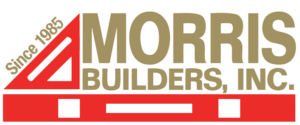Building, remodeling or just looking for a change? Selecting your new flooring can be quite a challenge. What species, smooth or distressed, what color? The most important question you need to ask yourself is what type of flooring “construction” do you want, solid or engineered.
THE DIFFERENCE
Solid wood flooring is just as the name implies, each flooring board is cut from one solid piece of wood. Engineered wood flooring means that each board is made of multiple flooring boards to achieve the desired thickness and durability. It is often assumed that solid wood flooring is not as stable as engineered wood flooring but it really depends on the manufacturer, construction and quality characteristics.
DIMENSIONS & THICKNESS
You may or may have noticed that the dimensions between the two options can be quite difference. About 90% of the engineered products are less than 6 foot long (averaging about 2’) and no wider than 5 inches. This may cause problems when trying to match existing floors. Because of the smaller size of engineered flooring, the additional seams could make the overall space too busy. That being said, there are some manufacturers, such as Carlisle, that do offer engineered wood flooring up to 8” wide and 12’ long. Solid wood flooring products come in a wide range of widths, lengths and thicknesses.
The thickness is most important when dealing with engineered flooring. It is important to make sure the backing layer is thicker than your wear layer to create a more stable engineered board, especially is areas with excess moisture or humidity. In addition, you ideally want an engineered floor with at least 11 plys and made from Baltic Birch premium hardwood plywood. This is the best in the industry and known for its resilience and stability.
WEAR LAYER
The wear layer is the surface you walk on which gets a lot of traction and wear. It is important to make sure the wear layer is at least 3/16” thick. You may be surprised to learn that most engineered floors are made with very thin wear layer equivalent to only 3 sheets of paper. Once this layer is worn through, it cannot be sanded or refinished. If you choose a solid wood floor, the wear layer is very thick and can also be sanded and refinished if needed. An important note about thickness and wear layer; the thickness of your backing and wear layer have a direct correlation to the cost of the product. The thinner it is, the less expensive and while this might present an economical solution upfront, these thin engineered don’t last long.
PREFERENCS | JOB SITE | INSTALLATION
The most critical factor to choosing between solid or engineered is the type of home you live in and it’s location. Another big deciding factor is the type of installation and who will be doing the install.
Ask yourself these questions:
Do you mind if your floors expand and contract between seasons creating small gaps during drier months? Or would you prefer a stable floor with very little expansion and contraction?
Will you live in your home year round or is it a seasonal home?
What type of wood are you interested in? Hardwood or Pine?
Are you going for a traditional look or more modern?
What type of installation are you considering? Concrete slab, radiant heat, or plywood?
For questions and help choosing the best flooring choice for your home,
call us today at (616) 874-6110
For more about Carlisle flooring, visit their inspirations page here.


